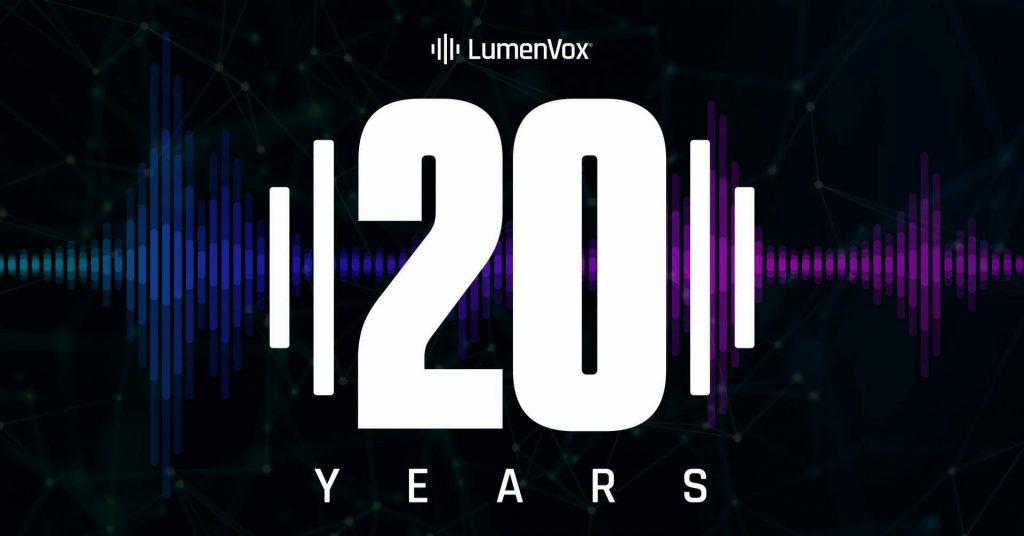Originally published on vmblog.com, authored by Joe Hagan, LumenVox Chief Product Officer
When the then-novel “Hey, Siri!” capability screamed onto the scene in 2011, no one could have predicted that voice technology would become a driver for innovation. Now, a decade later, it’s estimated that 1 in 4 U.S. adults own and actively use a smart speaker (i.e., Google Home, Amazon Echo) to enhance their lives. In addition, eMarketer forecasts that nearly 92.3% of smartphone users will likely employ voice assistants by 2023.
Voice-enabled interfaces and tools are exploding at an exponential rate across all industries, with notable growth in healthcare and in banking. According to analyst research, the expanding applications of voice and speech recognition technologies in these industries will enable the global voice and speech recognition technology market to reach $20.9 billion by 2026. With new capabilities for converting spoken language to text, virtual assistants, closed captioning and hands-free computing. New ASR engines are driving enterprise efforts for increasing productivity, such as voice biometrics, call progress analysis, and speech recognizers that are revolutionizing the way businesses operate.
Not only do these capabilities continue to innovate the way businesses serve customers, but they also play an important role in informing and elevating decision-making. Outlined below are three ways voice technology will evolve in 2022.
#1: Low-code/no-code solutions will drive personalized customer experiences
2022 will continue to see growth in the rise of the citizen developer movement and in the rapid deployment of low-code/no-code applications. As access to enterprise-grade technology is democratized, companies can select the best technology for every technical function without the burden of expensive professional service integration agreements. More enterprise services can be personalized to help build and nurture meaningful relationships with customers. Moreover, businesses will leverage high-performing voice technology grounded in Machine Learning (ML), Natural Language Processing (NLP), and sentiment analysis, to truly understand their customers. Identifying and analyzing customer intents and purposes will further enable brands to give their customers the ideal experience.
#2: Voice-enabled chatbots will support diverse user bases
As voice technology continues to grow more robust, forward-thinking enterprises can broadly deploy a host of applications, including voice-enabled chatbots. Voice-enabled chatbots provide benefits that include faster responses and zero wait time, better two-way interactions, enhanced customer experiences, and fraud detection. Voice-enabled chatbots can also play a critical role in serving a larger and more diverse base of users. For example, applications using state-of-the-art speech recognition can serve a large number of consumers, from a variety of languages and dialects, through a more efficient and accurate language model than ever before. Businesses that deploy voice-enabled chatbots to serve their whole base of customers will realize measurable value in technology that understands the broadest spectrum of users possible.
#3: Voice technologies will increasingly rely on AI and ML
Significant advancements in Artificial Intelligence (AI) and Machine Learning (ML) have made a significant impact on how we can better understand information. Contact centers have a wealth of data from interacting with their customers. However, contact centers analyze less than 3% of their customer interactions, leaving 97% of call data untouched – largely because of the complexity in making sense of the data in its audio format. Vast amounts of insight remain trapped in voice data for too many companies because their existing voice technology, requires them to commit time or resources to extract, analyze and leverage it. State-of-the-art speech and voice recognition technology holds the key to unlocking this valuable customer data. Voice technologies such as ASR that use deep neural networks can help companies save time, ramp up efficiency, and scale services in contact centers. ASR with AI will empower businesses to liberate trapped data, organize it and help them better serve customers.
Businesses across industries will continue to integrate state-of-the-art voice technology to build deeper customer experiences, elevate business processes, and strengthen decision-making. In 2022 and beyond, companies will use low-code/no-code solutions to further personalize customer interactions, support diverse user bases, and rely upon AI/ML to mine data from voice-enabled technologies.
Interested in learning more about LumenVox? Download the latest Frost & Sullivan Report.






